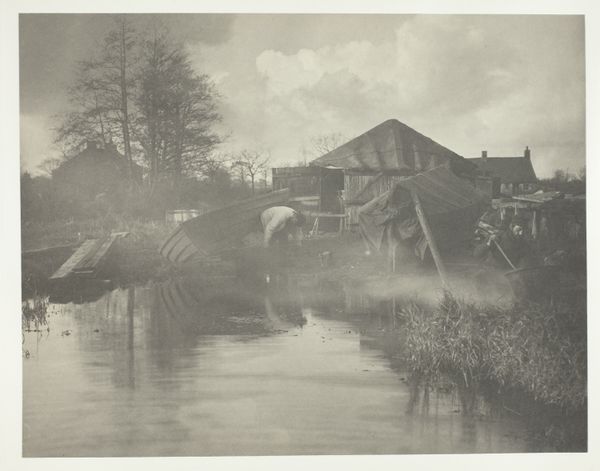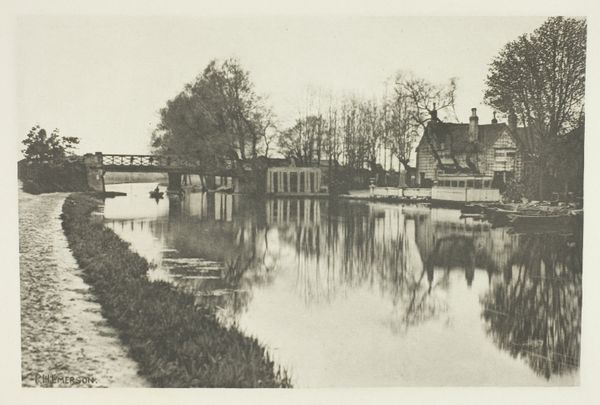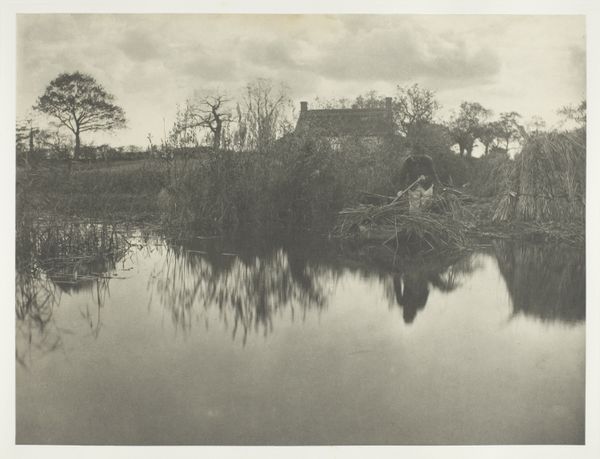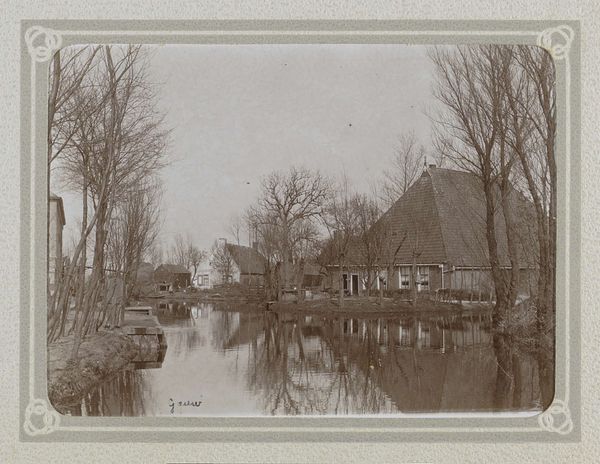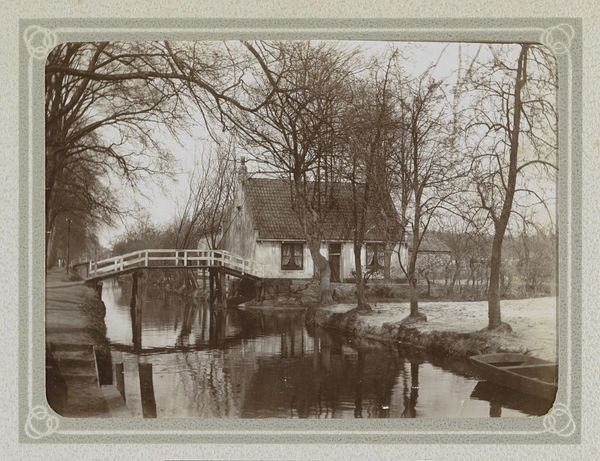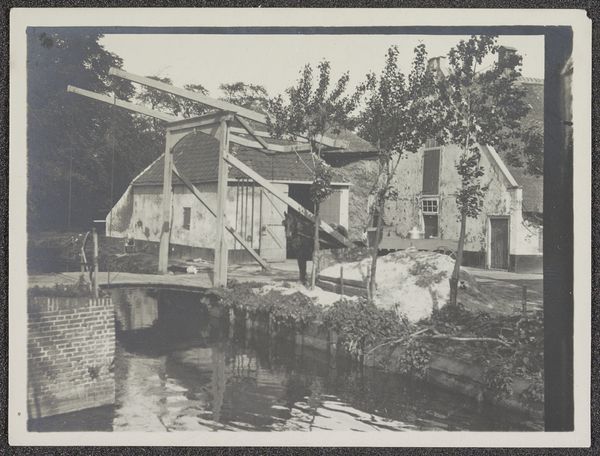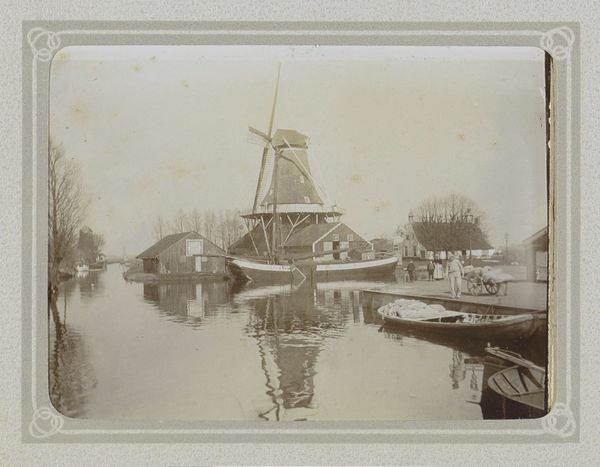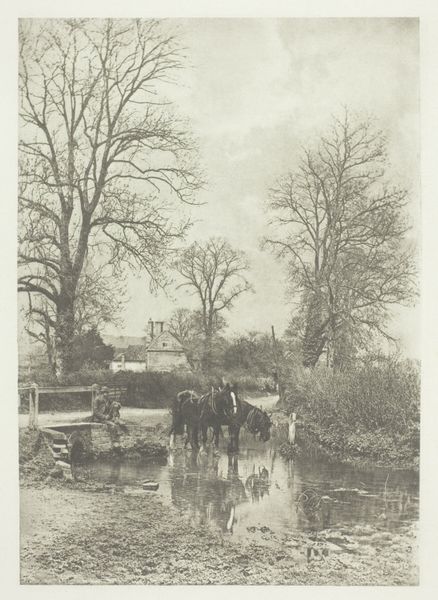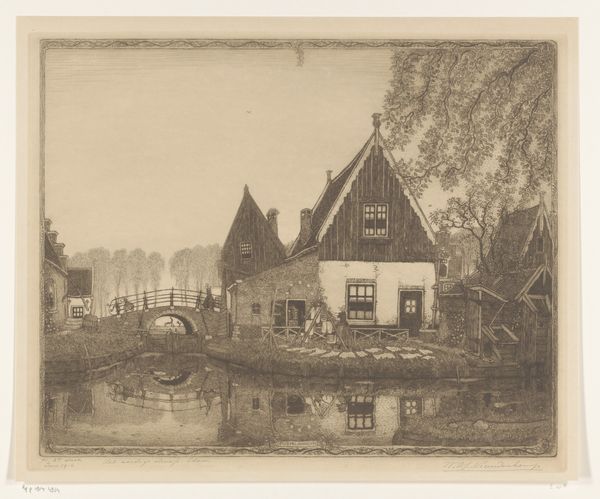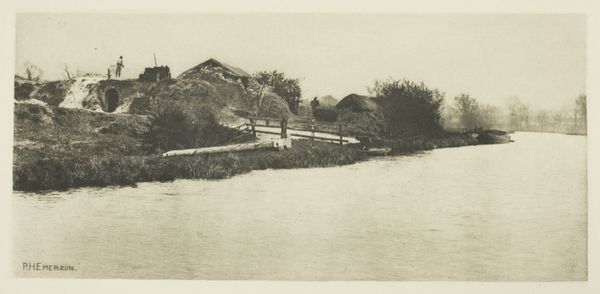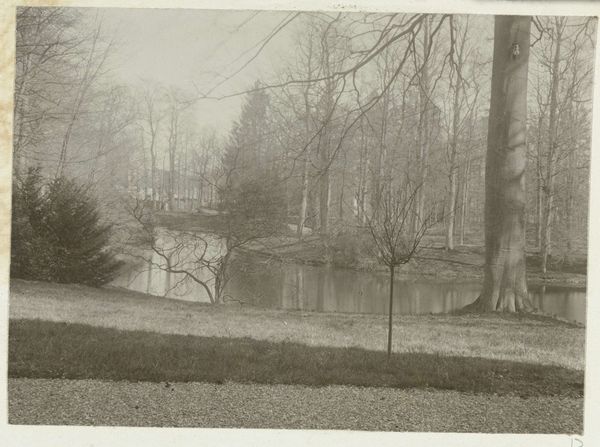
print, plein-air, photography, gelatin-silver-print
#
print photography
#
16_19th-century
#
pictorialism
# print
#
countryside
#
plein-air
#
landscape
#
natural light
#
agricultural
#
photography
#
gelatin-silver-print
Dimensions: 22.7 × 29 cm (image/paper); 28.5 × 40.6 cm (album page)
Copyright: Public Domain
Curator: We're looking at Peter Henry Emerson’s gelatin silver print, "A Broadman's Cottage," from 1886. The scene is a placid countryside river view. Editor: My first impression is a sense of calm, almost hushed. The tonal range is narrow, which mutes the details. It almost feels like looking at a dream. The texture is striking! I love the textures between the still river and fibrous plants near the shore. Curator: Absolutely, and Emerson was a staunch advocate of photography as a fine art. His focus was on capturing scenes en plein air. He really believed in naturalism. He thought photos should be faithful to how the eye actually sees, soft focus and all. Editor: Right, I see how that connects. Pictorialism really elevated the role of process; the darkroom becomes as important as the scene itself. And it seems the rural is foregrounded! Look how central labor is. The cottage suggests a life intertwined with the river, a life of gathering and maintaining. What stories could those buildings and that boat tell? Curator: Yes, his approach involved careful composition and printing techniques to create an artistic effect, almost mimicking paintings of the time. He was after something deeper than just documentation, aiming for the emotional resonance of a landscape. It is interesting, as the materials might seem basic, but their interaction with natural light yields something really profound, a bit transcendental! Editor: He uses simple, readily available technology—the camera, the printing process—to give value to everyday materials and daily life, which I find particularly compelling. By doing so, Emerson quietly asks us: where does craft end and fine art begin? What do we decide to value, and why? Curator: Exactly. He challenged the prevailing idea of the artist as someone separate from the subject, emphasizing instead our intimate connection with the environment. I almost feel that I can understand this. Editor: Looking at it, I appreciate that it pushes me to reconsider value—artistic value, yes, but also the value we ascribe to different forms of work, to rural settings, to simplicity itself. Curator: A final, lovely thought. Thanks for noticing this work alongside me, and for letting it settle in your mind like a peaceful memory.
Comments
No comments
Be the first to comment and join the conversation on the ultimate creative platform.
